Paintings by numbers "triptych"
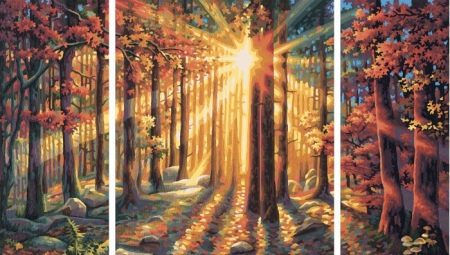
Anyone who decides to paint a picture by numbers will be able to feel like a real artist, capable of creating a masterpiece. Such models are beginning to gain popularity, allowing anyone who wants to try themselves in this field, to reveal their creative potential. In this article we will talk about paintings by numbers "triptych".
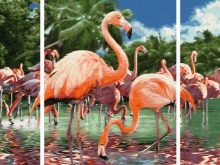

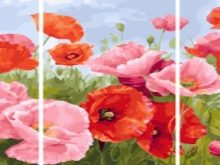
What it is?
Paint by number kits are a canvas with a stretcher, a set of brushes and numbered paint cans. The painting itself is pre-divided into small segments with numbers corresponding to the tone of the colors.

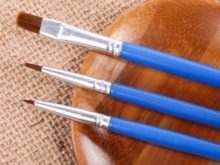
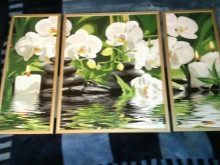
Beginners should pay attention to small-sized models with a minimum amount of parts. For more advanced craftsmen, more complex options are suitable.
"Triptych" is a plot composition consisting of three parts. The very concept of "triptych" comes from the adjective "triple". Typically, such works of art have a large base in the middle with smaller works located on the sides of it, but there are also options consisting of equal-sized panels.

Triple pictures with numbered segments represent images united by a single idea. Such canvases can be placed vertically or horizontally. Modular paintings on canvas in the "triptych" format will be an excellent decorative element that can decorate any room.
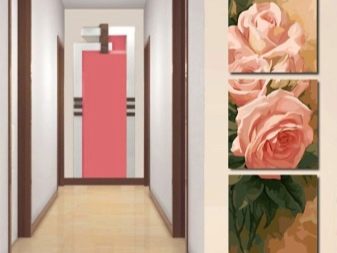
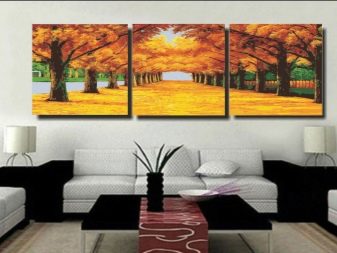
When creating triptychs, in addition to the numbered canvas, additional materials are used, allowing you to create an amazing masterpiece with your own hands.
Here's what's included in the complete set.
- Canvases with pre-numbered areas for coloring.
- Brushes of various sizes - from very thin brushes for drawing small elements to wide brushes for painting large areas.
- Small numbered paint containers. Each jar of acrylic paint has its own number, which corresponds to the number on the triptych painting. Such numbering will allow you to do the job efficiently and without problems.
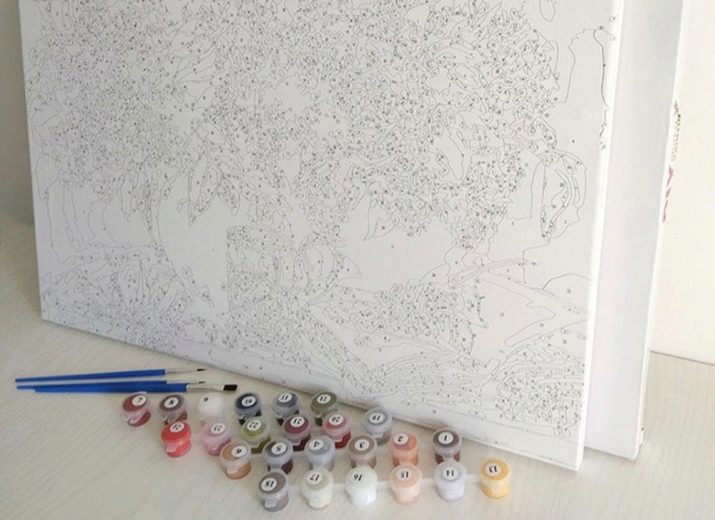
And also the kit may contain instructions with recommendations, an insert sheet for a sample, packaging.
Paintings painted with acrylics look very beautiful and interesting thanks to bright, rich colors. It is easy to work with such paints. They are water-based, absolutely safe to use, and have a large color palette. If a mistake is made during work, it can be corrected by painting it in the desired color after the problem area has completely dried.
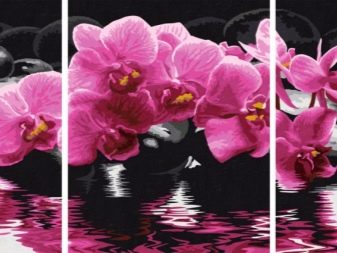
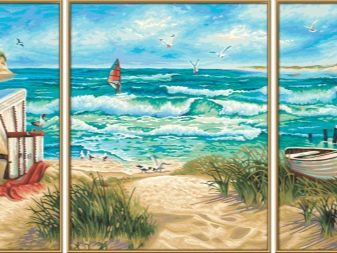
Species overview
There are several types of triptych models.
-
Vertical or horizontal modular paintings of animals.
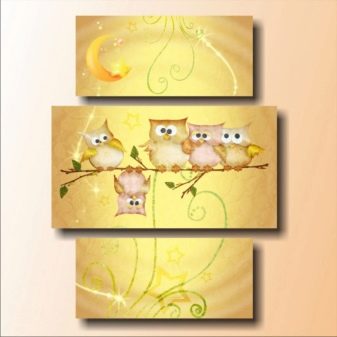

- Portraits.

- Sketches on the theme of "love".
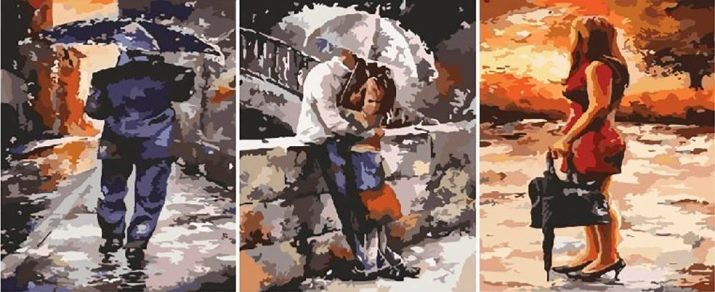
- Landscape. Such paintings usually depict seascapes or cityscapes, sketches on a village theme, sketches on a seasonal theme. Urban landscapes can be put on a par with portrait paintings. Big cities such as Paris, New York or Tokyo, as well as small villages on such canvases look very organic.
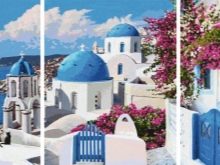
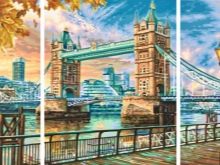
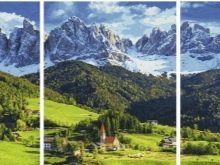
- Still lifes. This option can be called one of the most popular. This includes sketches of flower arrangements, images of fruits. Most often, flowers are painted in such paintings, such as roses, peonies, orchids. Images of flowers on triptych models look extraordinarily charming. You can be convinced of this by choosing the canvas "Pink Peonies" with a set of paints, consisting of 24 shades. By choosing one of the options, by drawing a lavender field or a bouquet of gladioli, you can make the canvas the central part of the interior or use it to highlight a specific area. So, a lavender field or sakura, depicted on canvas, will look great in a room made in the style of Provence, rustic or classic style. The triptych "Cherry Blossom" 50x120 cm in size will look appropriate in a large bright living room or even in an office.
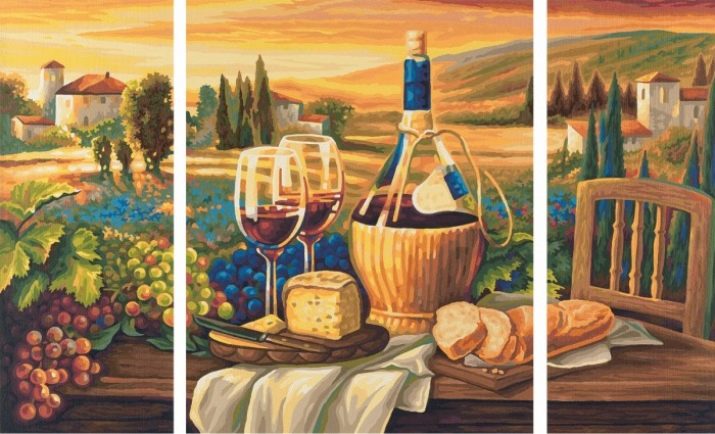
- Subject compositions. These include the painting "Ballerinas" measuring 40x50 cm, made on a snow-white canvas with a stretcher. It consists of three separate elements that are united by a common storyline. The presence of non-toxic water-based acrylic paints allows you to create masterpieces without mixing shades, since all the necessary colors are already in the set.
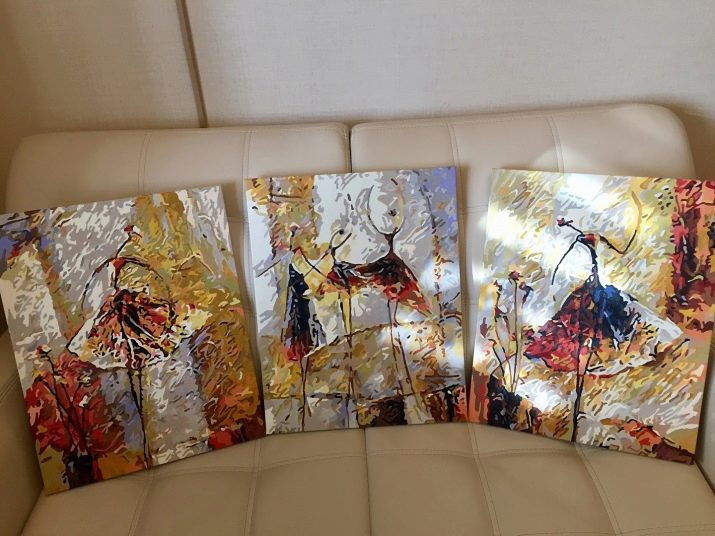
A do-it-yourself triptych will not only decorate any room. This is a great gift for any date.
Drawing nuances
Before you start working on creating your own masterpiece, having purchased a painting by numbers, you should familiarize yourself with some of the nuances related to drawing.
One of the criteria when choosing a canvas is the level of complexity. It depends on several factors, which include the size of the segments, as well as the application of the contours, the number of shades used in the set. According to the level of difficulty, several types can be distinguished.
- Beginner level, which consists of drawing large elements.
- Average level. In such paintings, not only large, but also medium, and also small elements are usually present.
- Difficult level. Such canvases already contain very small segments using a large number of shades.



It is advisable for beginners to choose canvases with an initial or medium level of image complexity. And also you should pay attention to the clarity of the application. Often in the process of work you have to use a magnifying glass or other magnifying device.
For the paints included in the set, use small jars with the corresponding numbers. They do not need to be diluted and can be used immediately.Acrylic paints for painting on canvas are water-based. But when interacting with air, they begin to thicken and dry out over time. For resuscitation, just drop a little water into a jar and stir.
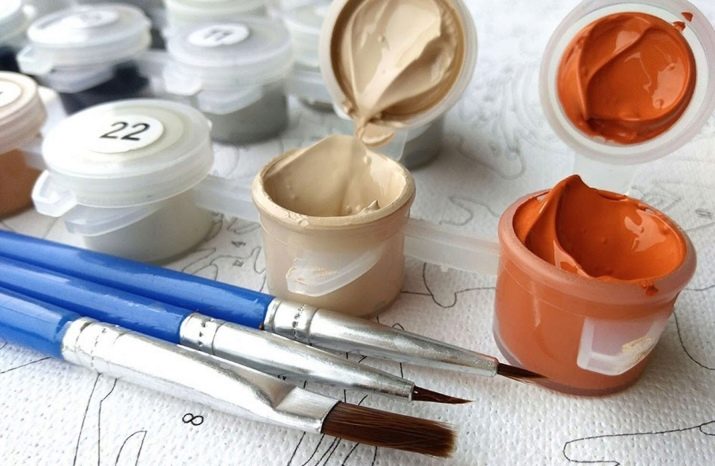
Painting of pictures, including triptychs, can be done in different ways.
- Starting with drawing large areas, and moving on to small ones. This method is more suitable for novice artists who can practice.
- In the opposite way relative to the previous version, that is, starting with the image of small details and ending with large segments.
- By drawing the segments starting at the bottom and going up.
- Through the consistent use of numbered shades.

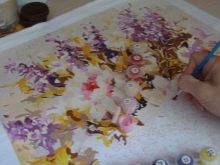
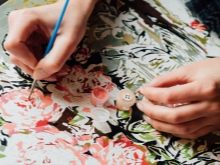
The method of applying paints is chosen depending on the complexity of the drawing, the level and skills, and personal preferences. When applying, it is undesirable to leave the site. When crawling out onto a neighboring area, the paint is removed with a damp brush, washed in clean water. After waiting for the layer to dry, it is advisable to apply a second one, making horizontal strokes.
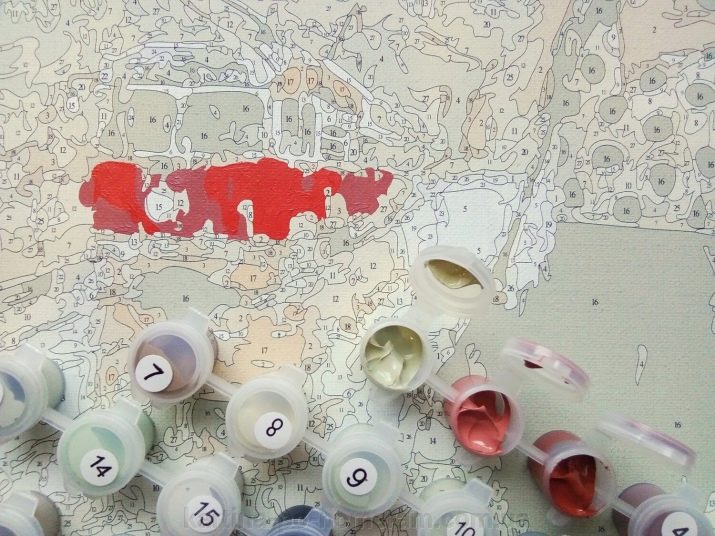
To make a smooth transition from one color to another, use a dry brush with a drop of paint.








